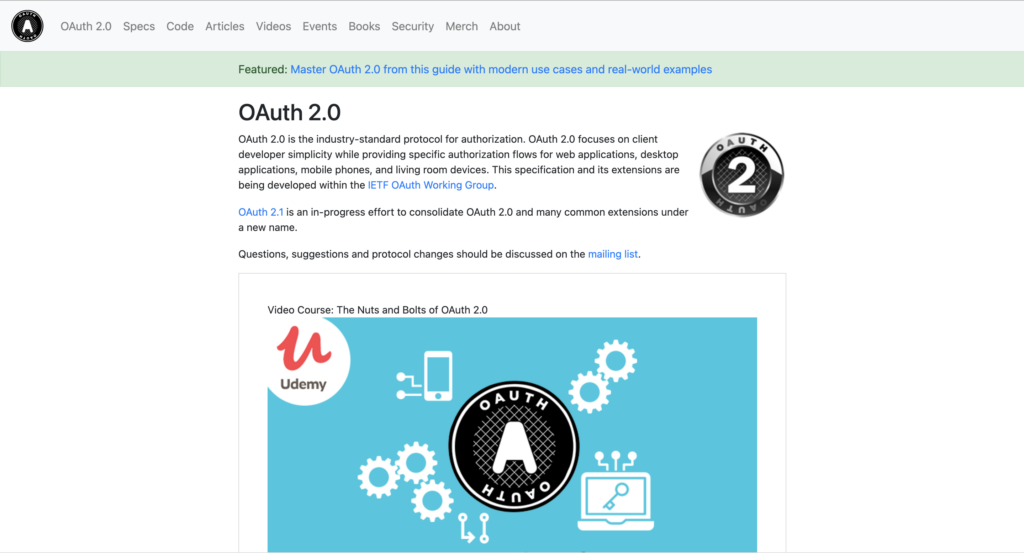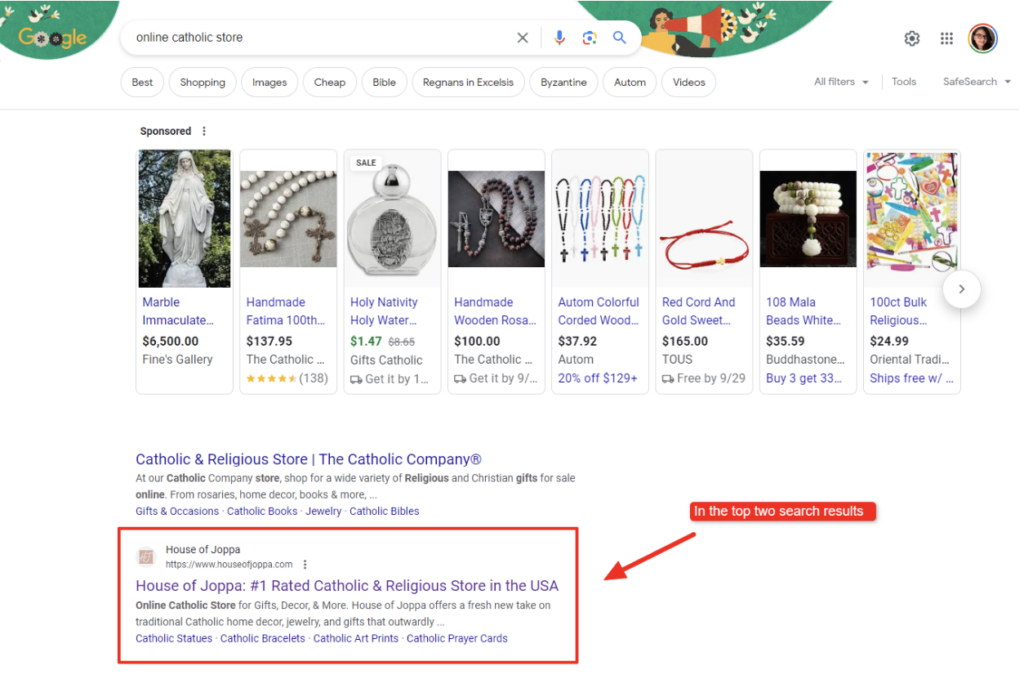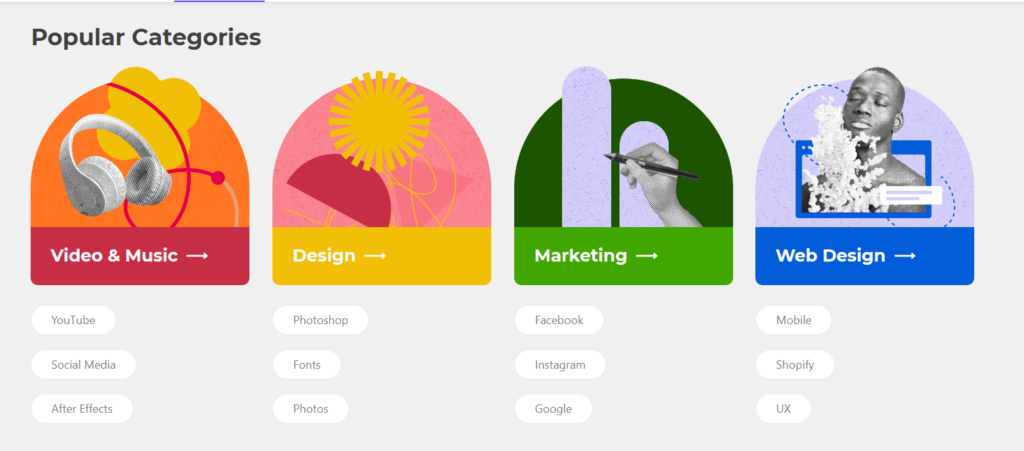A Guide To Technical SEO: Improving Website Performance and Rankings
Looking to improve your website’s performance and rankings?
In today’s short Tecnical SEO Guide, we’re reviewing five simple yet powerful ways you can follow to get on Google’s good side.
Keep reading to learn how to apply these strategies to your website!
Structure your website's SEO based on content pillars, user segments, and main topics
Personalizing your website for your ideal audience is one of the most vital inbound marketing strategies.
That’s why it’s imperative to get super strategic with your keyword planning.
To start, get laser-clear on your target audience and create buyer personas that represent your customer segments.
For instance, you might have two buyer personas representing your web designer customer segment, another two for your graphic designer segment, and two more for your video creator segment.
In your buyer personas, describe each user’s pain points and how you solve them in detail.
Use this data to plan content pillars and main topics that align with each segment.
Here’s a simple template you can use to plan your structure list:
“User Segment ▶️ Pillar ▶️ Topics”
Here’s an example:
- Web designers ▶️ Web design ▶️ WordPress, UX design, Web design trends
- Graphic designers ▶️ Graphic design ▶️ Logos, Branding, Illustrations, and Fonts
- Video creators ▶️ Video content ▶️ Video trends, Trending audios, Video advertising
Next, use a keyword research tool to pull secondary and long-tail keywords and add them to your list. Use all of this data to brainstorm relevant website sections, blog post titles, and resources you can create to naturally weave these terms in. Add these to your structure list as well.
Then refer to your list and begin adding keywords to your site.
Here’s a checklist you can use to organize the process:
- Create your pillar blog posts based on your content pillars
- Schedule other blog posts based on your main topics to publish every week
- Create topic clusters by bundling your pillar posts with relevant main topic pieces
- Publish a Knowledge Base or a Help Center section based on long-tail keywords
- Add a Resource section with helpful guides based on long-tail keywords
- Create an FAQ section on your home page based on the “More to ask”, “More searches”, and “Things to know” sections that appear in Google’s SERP for your main keywords
- Weave in relevant main topic keywords, content pillar keywords, and secondary keywords throughout your home page and relevant site pages
Aim for a high website performance score
The next step in this Technical SEO Guide is to use a website performance checker to make sure your site meets Google’s standards.
Be sure to also check your site on multiple devices, screens, and screen sizes. If your site doesn’t load quickly, adapts to all devices, or has glitches, work with your developer to iron everything out.
Head to YUPLAY for a prime example of a site that loads quickly, is glitch-free, and offers users an instantly immersive experience.

With compressed yet crisp images and quick server response times, YUPLAY makes sure its users get the information they want without any delay.
Additionally, its responsive design and intuitive navigation mean users can use any device and still get a high-quality viewing and user experience.
Prioritize security, privacy, and GDPR regulations
Don’t overlook the security and privacy of your website and its users. If you track cookies or handle sensitive data, like payment information, contact details, or login credentials, you need to make sure to protect it from unauthorized access and malicious attacks.
This isn’t just the ethical thing to do. It’s also a standard practice to follow to meet GDPR regulations.
For instance, if you store logins, consider using the OAuth protocol to authorize users with credentials they use to access third-party applications, like Google or Twitter. With OAuth, they can log in securely without sharing their passwords or setting up a new profile with you.

Or, if you have a blog that allows users to comment using their Facebook or Twitter accounts, you can use OAuth to authenticate them and display their profile pictures and names next to their replies. This can make your website more trustworthy and appealing to potential visitors.
Befriend responsive web design
Use responsive design templates or responsive web design best practices to create a site that adapts to different screen sizes and devices, such as desktops, smartphones, tablets, and laptops.
Responsive web design helps deliver a consistent and optimal user experience across various platforms, reduce bounce rates, and increase conversions. This makes it a key strategy in this technical SEO guide and to please the Google bots.
For example, lab-grown diamonds company VRAI implemented responsive web design solutions to guarantee its website looks great and functions optimally on any device.
This helps the brand reach more potential customers searching for lab diamonds on different devices and provides them with a smooth and satisfying shopping experience.
Here’s what the site looks like on an iPhone:

And here’s how it looks on a 15-inch laptop screen:

Give your online store an SEO headstart with Shopify
Do you run an ecommerce brand or sell physical or digital products?
Then you can’t overlook the power of Shopify’s done-for-you approach to technical SEO. With its built-in search engine optimization, there’s not much you’ll need to do to optimize your online store. And if you’re considering offering subscriptions on Shopify, there are third-party apps that help you sell products on a recurring basis.
As a bonus, themes in the Shopify Theme Store are responsive and ready to go. In other words, you can skip manual coding and SEO indexing work, as well as the additional capabilities of Shopify’s headless commerce capabilities.
A great example of this strategy in practice is House of Joppa, an online store specializing in Catholic home decor. By creating a Shopify site, House of Joppa now has a mobile-responsive website with a noteworthy presence in the SERPs.
Here’s what the site looks like on a desktop computer:

And here’s where it appears in the SERPs when searching “online Catholic store”:

That’s right! It’s in the top two search results.
House of Joppa’s site also loads quickly, is glitch-free, and is structurally sound with content pillars, main topics, and secondary keywords.
If you’re looking for a site that checks all of the technical SEO boxes, House of Joppa is the one.
Wrap up
If you’re ready to uplevel your SEO game, we hope today’s simple Technical SEO Guide has inspired you to take the next step.
Remember, to improve your website’s ranking potential, be sure to:
- Structure your website’s SEO based on content pillars, user segments, and main topics
- Aim for a high website performance score
- Prioritize security, privacy, and GDPR regulations
- Befriend responsive web design
- Give your online store an SEO headstart with Shopify
That’s it for now, SEOs.
Here’s to your success!
PS: Want to double your organic traffic in 180 days or less? Find out how with our inbound leads guide!













